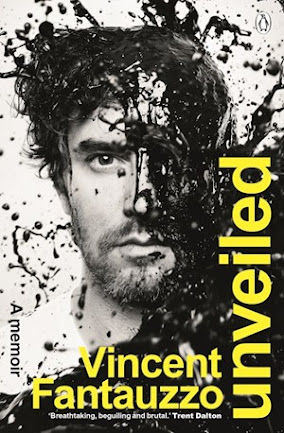 |
| Euan Fistrovich Doidge (Maximilian) - Cathy-Di Zhang (Paquette) - Eddie Perfect (Dr.Pangloss) -Annie Aitkin (Cunegonde) - Lyndon Watts (Candide) |
Composed by Leonard Bernstein – Libretto by Richard Wilbur
Conducted by Brett Weymark OAM – Directed by Dean Bryant
Set and Costume design by Dann Barber – Lighting design by
Matthew Scott
Sound design by Samuel Moxham – Choreographed by Freya List
Victorian Opera’s original production presented by Opera
Australia.
Sydney Opera House – Feb.20th to March 14th,
2025.
Opening night performance on Feb.20th reviewed by
BILL STEPHENS.
 |
| Cathy-Di Zhang (Paquette) - Euan Fistrovich Doidge (Maximilian) and the Opera Australian Chorus. |
Despite its 1956 premiere Broadway season being labelled a box
office disaster, Candide has become one of those masterpieces best known
for its components rather than its complete performances which are still relatively
rare.
The overture, orchestrated by Leonard Bernstein himself, is
a favourite party piece for symphony orchestras worldwide, while coloratura
sopranos delight in demonstrating their virtuosity with renditions of the
stratospheric aria, “Glitter and Be Gay”.
The only other production of this work experienced by this reviewer
was the legendary 1984 production directed by John Bell in the Seymour Centre which
boasted a cast that included Philip Quast, Jon Ewing, Tony Sheldon, Tony
Taylor, Deidre Rubenstein, Susan Van Cott, Barry Lovett and Rick Burchall.
However, in 2015, Lindy Hume created a production of Candide
for Opera Queensland which starred David Hobson as Candide and Amelia Farrugia
as Cunegonde.
In 2018 Mitchell Butel staged a production of Candide
in the Sydney Opera House in which Alexander Lewis played Candide, Annie Aitkin
played Cunegonde and Caroline O’Connor was The Old Lady,
Butel staged Candide again in 2024, this time in a
co-production for the State Theatre Company South Australia and State Opera
South Australia, with Alexander Lewis, Annie Aitkin and Caroline O’Connor
repeating their roles as Candide, Cunegonde and The Old Lady.
Earlier in that same year Dean Bryant produced a completely
different concept for his production of Candide for Victorian Opera.
This production featured Eddie Perfect in the dual roles of Voltaire/ Pangloss,
Lyndon Watts as Candide and Alexander Lewis demonstrating his versatility by
taking on two different roles, Governor and Vanderdendur.
In that production Katherine
Allen played Cunegonde and Maria Mercedes played The Old Lady.
 |
| Eddie Muliaumaseali'i (Cacambo) - Lyndon Watts (Candide) - John Longmuir (Vanderdendur) - Andrew Moran (Martin) - Euan Fistrovic Doidge (Maximilian) -Cathy-Di Zhang (Paquette) - Annie Aitken (Cunegonde) - The Opera Australia Chorus in Opera Australia's "CANDIDE" |
When Opera Australia programmed Victorian Opera’s production for
inclusion its 2025 season it retained Eddie Perfect, Lyndon Watts, Euan
Fistrovic Doidge and Eddie Muliaumaseali’i in the roles they had created for Dean
Bryant but cast Annie Aitken as Cunegonde.
All these artists had appeared previously in productions for
Opera Australia, except for Euan Fistrovic Doidge, who was making his Opera
Australia debut as the wonderfully campy Maximilian.
Opera Australia alumni, Dominica Matthews, Cathy-Di Zhang, John
Longmuir and Andrew Moran are cast in the roles of The Old Lady, Paquette,
Governor/Vanderdendur and Martin respectively, along with the Opera Australia Orchestra
and Chorus.
One could hardly imagine a more perfect combination of music
theatre and operatic talents to interpret Dean Bryant’s deliciously subversive
concept, which sets the action in a clapped-out fifties caravan inhabited by a
ghostly troupe of characters wearing bizarre makeup and decaying, once-lavish
18th century costumes and wigs.
In this satire of a satire, pop-up signs effectively
transform the caravan and keep the audience informed as to the location of the
series of extraordinary events which challenge the resolve of Lyndon Watts’ Candide
as he traverses the world convinced that he is living in ‘the best of all
possible worlds”.
 |
| Cathy-Di Zhang (Paquette) - Eddie Perfect (Voltaire) in "Candide" |
Eddie Perfect, brilliant as both the narrator, Voltaire and Candide’s
tutor, Dr Pangloss, cleverly pricks any hint of pretention while the various characters,
including Dr. Pangloss, endure a succession of eye-popping, cleverly staged and
often very funny, events, for which Bernstein has written a succession of
beautiful melodies, most of which are referred to in his justly celebrated
overture.
Each of these songs is gloriously sung with admirable style
and panache by this cast of superb singer/actors, thrillingly supported by the Opera
Australia orchestra and chorus exhilaratingly conducted by Brett Weymark OAM.
Among many highlights in what will undoubtably be remembered
as a definitive production of this Bernstein masterpiece, the extraordinary virtuosic
performance of Annie Aitkin as a hilariously drug-addled Cunegonde singing “Glitter
and Be Gay”, that deservedly stopped the show; and the full cast choral version
of the concluding song “Make Our Garden Grow”, which brought the excited
first-night audience to its feet for a thunderous ovation, will remain treasured
memories.
Photos by Carlita Sari
This review also published in AUSTRALIAN ARTS REVIEW. www.artsreview.com.au
























